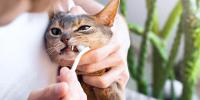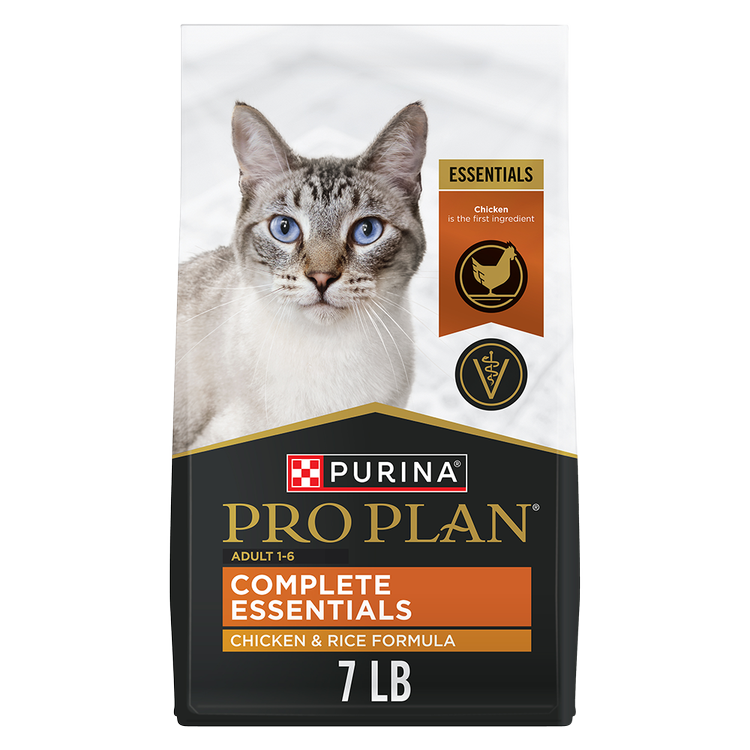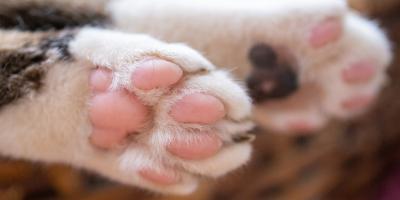Maintaining your cat’s dental health is important. Think of their oral health as the gateway to their total body health. Dental problems can be painful and can lead to other illnesses when left untreated.
Brushing your cat’s teeth is the most effective way to support their dental health. They may not love the experience at first, but if you establish a routine and offer plenty of positive reinforcement, they may grow to enjoy it. Additionally, it offers an opportunity to bond with your feline companion.
If you’re wondering how to brush your cat’s teeth, read on to learn helpful tips, teeth-brushing alternatives, like dental cat treats, and step-by-step instructions.
Why Should You Brush Your Cat’s Teeth?
Cats’ teeth aren’t too different from our own. Their teeth accumulate plaque caused by bacteria left behind from the food they eat. If you don’t remove plaque from your cat’s teeth, it can harden and turn into tartar. Over time, this can lead to gingivitis, periodontal (gum) disease and even tooth loss.
Poor cat dental health is also associated with heart problems, kidney issues and more.
The following symptoms could be a sign of dental disease:
- Bad breath
- Red, inflamed gums
- Yellow or brown tartar on your cats’ teeth
- Drooling
- Chewing on one side of the mouth
- Decreased appetite and weight loss
Additionally, many cats experience tooth resorption. This is a condition where the protective dentin on the teeth erodes, resulting in the loss of one or more teeth. Symptoms of advanced resorption include favoring one side of the mouth while your cat eats, swallowing without chewing, or an apparent lack of appetite.
Any symptoms of gum disease or resorption warrant a trip to your veterinarian. They’ll do a full examination to determine the cause of your pet’s issues and can recommend adjustments to your cat’s dental care routine to improve their oral health.
What to Brush Your Cat’s Teeth With
In order to brush your cat’s teeth, you’ll just need:
- A cat toothbrush. There are toothbrushes specially made for cats. Some include angled handles and multiple heads. These features are designed to make the process efficient and comfortable for both you and your pet.
- Toothpaste. Look for options specifically formulated for cats. They often come in flavors intended to appeal to felines.
Can You Brush a Cat’s Teeth With Human Toothpaste?
Human toothpastes contain ingredients that can make cats sick, if swallowed. Similarly, substances, like baking soda, should be avoided as toothpaste alternatives, as they can upset your pet’s stomach.
How to Brush Your Cat’s Teeth, Step-By-Step
When it comes to teeth brushing for cats, pet owners should start slow and practice patience.
Here are steps you can take to make the process go as smoothly as possible:
- Ensure your cat is relaxed and choose a quiet location you can return to every day, ideally at the same time.
- Put a dab of cat toothpaste on your finger and offer it to them to lick. Do this for a few days so they get used to the flavor and texture.
- Once your cat has come to enjoy and expect the toothpaste, it’s time to introduce the brush. Place a dab of cat toothpaste on their brush and have them lick it off.
- Keep your cat in your lap, or have their back to you when you start, as they may try to back away.
- Gently pull back your cat’s lips and touch their teeth with the toothbrush with a dab of toothpaste on it. Then stop and offer your cat the cat toothpaste on the toothbrush for them to lick off as a reward. Repeat for several days until they’re comfortable.
- Once your cat is comfortable, you can start brushing. Apply the bristles to the teeth and brush the tooth surface to slightly below the gumline, while not brushing the gums directly.
Remember to keep brushing sessions short and positive by taking breaks and offering rewards. Eventually, try to spend about 30 seconds brushing each side of their mouth.
Additionally, wear gloves or wash your hands when you finish brushing your pet’s teeth, as their mouths contain bacteria.
How Often Should You Brush Your Cat’s Teeth?
Ideally, you should brush twice per day. This is the best way to prevent plaque and tartar from accumulating on your cat’s teeth. Brushing becomes more convenient if you make it part of your daily routine—like how you might feed or play with your cat at the same time every day.
At minimum, aim to brush your pet’s teeth a few times per week.
How to Clean Cat Teeth Without Brushing
Remember, brushing is the best way to support healthy cat teeth. If your feline doesn’t tolerate it, though, there are alternatives.
Your veterinarian can help you determine which options are best for your cat. These options include:
- Dental cat treats. These can help remove plaque and tartar.
- Dental chew toys. While chew toys are typically made for dogs, you may find some options designed to appeal to cats.
Before starting alternative cat dental care at home, ask your veterinarian about which products they recommend.
When to Go to the Vet to Get Your Cat’s Teeth Cleaned
Before you start a toothbrushing routine for your cat, schedule a checkup with your veterinarian and see if a cleaning is necessary. Some felines never need professional teeth cleanings, while others may have difficulty maintaining good oral health.
If your cat is scheduled for a dental cleaning, ask your veterinarian if anesthesia is necessary. Depending on your pet’s tolerance and the extent of cleaning required, non-anesthetic cleaning may be an option.
Unhealthy cat teeth can lead to dental disease and potentially other health problems. That’s why it’s important to maintain a routine of regular toothbrushing. If your pet is uncomfortable with having their teeth brushed or they make it exceedingly difficult, talk to your veterinarian about other options.
For more expert tips on grooming your feline companion, explore our other routine care for cats articles.
Related articles

Earn myPurina Rewards with Every Purchase
Use your points for treats, toys, and gift cards with myPurina app.








